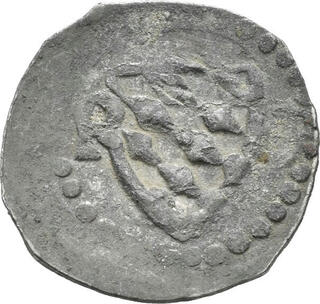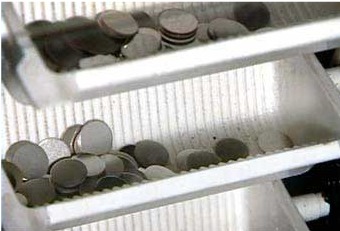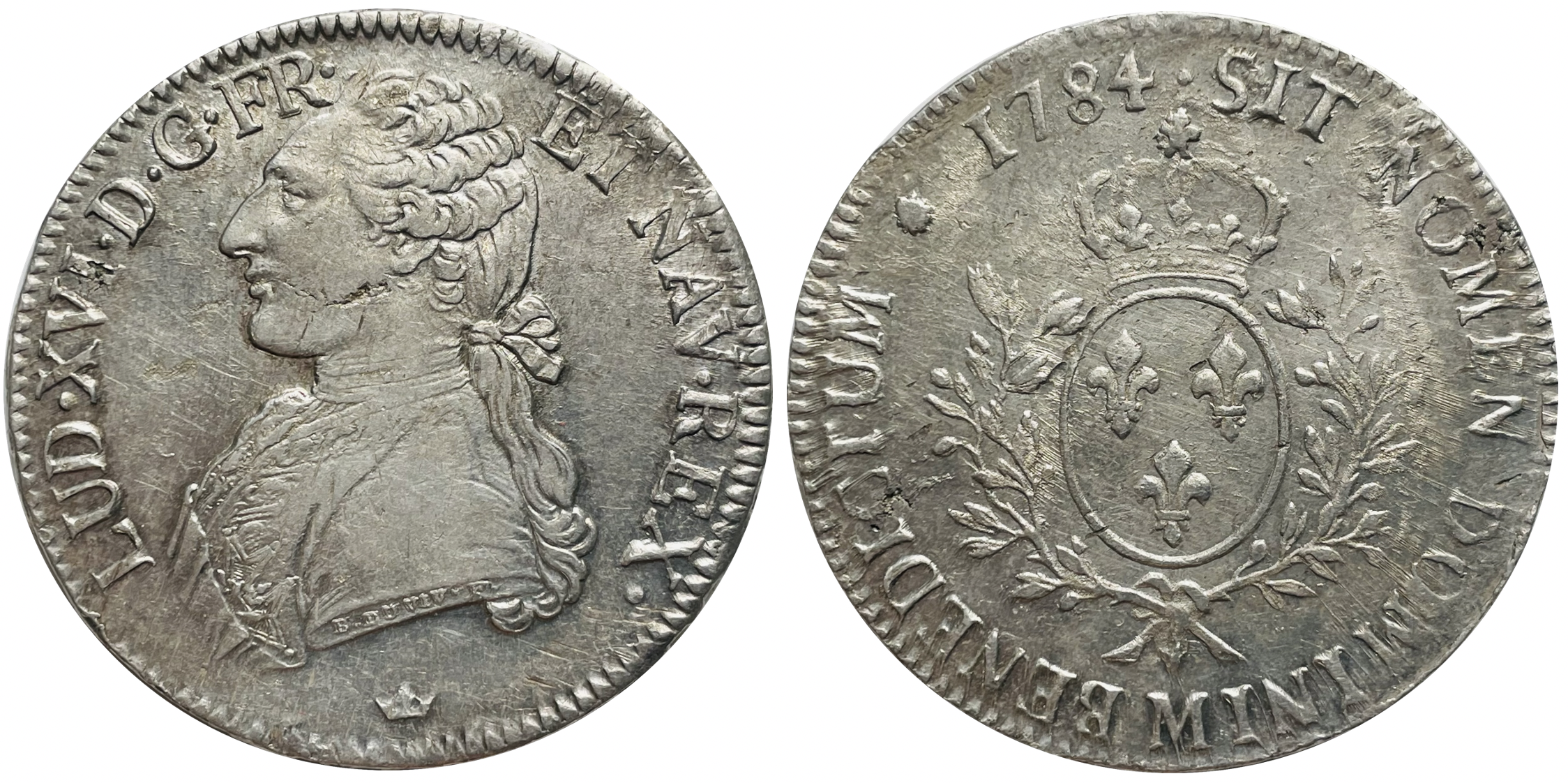|
Weckeler
The ''Weckeler'', also called a ''Weckelerpfennig'', is a one-sided silver Palatine ''pfennig'' coin of the 14th and 15th century, which was also called the ''Wegkpfennig'' in the local dialect. It occurs both as a ''Schüsselpfennig'' and as a non-domed, planar coin. The ''pfennigs'' were given their contemporary name after their image, a lozenged coat of arms. This ''pfennig'', with its ring of pearls around a central lozenged shield or just a lozenge without a shield, developed into the bowl-shaped ''Schüsselpfennig'' in the 15th century. The ''Weckeler'' was struck on one side only using a coin die smaller than the actual planchet A planchet is a round metal disk that is ready to be struck as a coin. An older word for planchet is flan. They are also referred to as blanks. History The preparation of the flan or planchet has varied over the years. In ancient times, the f .... The force of the die stamp caused the perimeter of the planchet to curve upwards to a gr ... [...More Info...] [...Related Items...] OR: [Wikipedia] [Google] [Baidu] |
Pfennig
The 'pfennig' (; . 'pfennigs' or ; symbol pf or ₰) or penny is a former German coin or note, which was the official currency from the 9th century until the introduction of the euro in 2002. While a valuable coin during the Middle Ages, it lost its value through the years and was the minor coin of the Mark currencies in the German Reich, West and East Germany, and the reunified Germany until the introduction of the euro. Pfennig was also the name of the subunit of the Danzig mark (1922–1923) and the Danzig gulden (1923–1939) in the Free City of Danzig (modern Gdańsk, Poland). Overview Name The word ''Pfennig'' (replacing the ''denarius'' or ''denarius'' as a low-denomination silver coin) can be traced back to the 8th century and also became known as the ''Penning'', ''Panni(n)g '', ''Pfenni(n)c'', ''Pfending'' and by other names, e.g. in Prussia until 1873, ''Pfenning''. The ''-ing''- or ''-inc'' suffix was used, in addition to ''-ung'', the formation of affil ... [...More Info...] [...Related Items...] OR: [Wikipedia] [Google] [Baidu] |
Schüsselpfennig Um 1400 Pfalz
A Schüsselpfennig ("dish ''pfennig''"), also ''Gehulchter Pfennig'' ("hollow ''pfennig''") is so called due to the stamping technique which results in a concave, one-sided type of ''Pfennig'' coin. It was probably first minted in 1374 in the Palatinate. Small ''Schüsselpfennigs'' that had entered the Electorate of Saxony were referred to there as ''Näpfchenheller'' ("saucer ''hellers''"). History The ''Schüsselpfennig'' was widespread and can even be found in dictionaries described as a "small one-sided pfennig made of silver with a rim that is curved upwards like a dish". It was manufactured by minting using only one, upper, stamp on a larger planchet. When the ''pfennig'' was stamped, its edge was pressed upwards in the shape of a bowl or dish. The convex shape of the ''pfennigs'' proved to be very practical in payment transactions because the small coins were easier to grip than their flat counterparts. The forerunners of the ''Schüsselpfennigs'' were the one-sided ... [...More Info...] [...Related Items...] OR: [Wikipedia] [Google] [Baidu] |
Schüsselpfennig
A Schüsselpfennig ("dish ''pfennig''"), also ''Gehulchter Pfennig'' ("hollow ''pfennig''") is so called due to the stamping technique which results in a concave, one-sided type of ''Pfennig'' coin. It was probably first minted in 1374 in the Palatinate. Small ''Schüsselpfennigs'' that had entered the Electorate of Saxony were referred to there as ''Näpfchenheller'' ("saucer ''hellers''"). History The ''Schüsselpfennig'' was widespread and can even be found in dictionaries described as a "small one-sided pfennig made of silver with a rim that is curved upwards like a dish". It was manufactured by minting using only one, upper, stamp on a larger planchet. When the ''pfennig'' was stamped, its edge was pressed upwards in the shape of a bowl or dish. The convex shape of the ''pfennigs'' proved to be very practical in payment transactions because the small coins were easier to grip than their flat counterparts. The forerunners of the ''Schüsselpfennigs'' were the one-sided ... [...More Info...] [...Related Items...] OR: [Wikipedia] [Google] [Baidu] |
Lozenge (heraldry)
The lozenge in heraldry is a diamond-shaped rhombus charge (an object that can be placed on the field of the shield), usually somewhat narrower than it is tall. It is to be distinguished in modern heraldry from the fusil, which is like the lozenge but narrower, though the distinction has not always been as fine and is not always observed even today. A mascle is a voided lozenge—that is, a lozenge with a lozenge-shaped hole in the middle—and the rarer rustre is a lozenge containing a circular hole in the centre. A field covered in a pattern of lozenges is described as lozengy; similar fields of mascles are masculy, and fusils, fusily (see Variation of the field). In civic heraldry, a lozenge sable is often used in coal-mining communities to represent a lump of coal. A lozenge shaped escutcheon is used to depict heraldry for a female (in continental Europe especially an unmarried woman), but is also sometimes used as a shape for mural monuments in churches which commemorate f ... [...More Info...] [...Related Items...] OR: [Wikipedia] [Google] [Baidu] |
Palatinate (region)
The Palatinate (german: Pfalz; Palatine German: ''Palz'') is a region of Germany. In the Middle Ages it was known as the Rhenish Palatinate (''Rheinpfalz'') and Lower Palatinate (''Unterpfalz''), which strictly speaking designated only the western part of the Electorate of the Palatinate (''Kurfürstentum Pfalz''), as opposed to the Upper Palatinate (''Oberpfalz''). It occupies roughly the southernmost quarter of the German federal state of Rhineland-Palatinate (''Rheinland-Pfalz''), covering an area of with about 1.4 million inhabitants. Its residents are known as Palatines (''Pfälzer''). Geography The Palatinate borders Saarland in the west, historically also comprising the state's Saarpfalz District. In the northwest, the Hunsrück mountain range forms the border with the Rhineland region. The eastern border with Hesse and the Baden region runs along the Upper Rhine river, while the left bank, with Mainz and Worms as well as the Selz basin around Alzey, belong to th ... [...More Info...] [...Related Items...] OR: [Wikipedia] [Google] [Baidu] |
Pearl Circle
A pearl circle (also pearl rim or pearl ring; French ''grènetis'', German ''Perlkreis'', ''Perlrand'', ''Perlreif'') is a circular arrangement of fine, raised points or "pearls" on the edge of coins; it also sometimes appears in round or oval frames. It can be considered a relative or subsidiary form of the bead and reel motif. Shape If there is a pearl circle or a string of pearls on coins, it usually encloses the entire coin design. The pearl circle can be on one or both sides of a coin.''Perlkreis'' at reppa.de. Retrieved 5 July 2022. In addition to a simple beaded wreath, there are also double or multiple beaded circles. There are also variants that do not have circular beads or that show an alternating pattern of beads and other simple geometric figures. Function Pearl circles (later also small edge bars) were not ...[...More Info...] [...Related Items...] OR: [Wikipedia] [Google] [Baidu] |
Planchet
A planchet is a round metal disk that is ready to be struck as a coin. An older word for planchet is flan. They are also referred to as blanks. History The preparation of the flan or planchet has varied over the years. In ancient times, the flan was heated before striking because the metal that the coin dies were made of was not as hard as dies today, and the dies would have worn faster and broken sooner had the flan not been heated to a high temperature to soften it. An unusual method was used to mint the one-sided, bowl-shaped ''pfennigs'' of the Holy Roman Empire. The planchet used for these so-called ''Schüsselpfennigs'' was larger than the coin die itself. The coins were made by striking with only one upper die on the larger planchet. As a result, the perimeter of the planchet was pressed upwards in the shape of a bowl or plate. Until the 18th century they were minted mainly in the Harz Mountains. The curved shape of the pfennig was very useful for handling small change ... [...More Info...] [...Related Items...] OR: [Wikipedia] [Google] [Baidu] |
Silver Coins
Silver coins are considered the oldest mass-produced form of coinage. Silver has been used as a coinage metal since the times of the Greeks; their silver drachmas were popular trade coins. The ancient Persians used silver coins between 612–330 BC. Before 1797, British pennies were made of silver. As with all collectible coins, many factors determine the value of a silver coin, such as its rarity, demand, condition and the number originally minted. Ancient silver coins coveted by collectors include the Denarius and Miliarense, while more recent collectible silver coins include the Morgan Dollar and the Spanish Milled Dollar. Other than collector's silver coins, silver bullion coins are popular among people who desire a "hedge" against currency inflation or store of value. Silver has an international currency symbol of XAG under ISO 4217. Origins and early development of silver coins The earliest coins in the world were minted in the kingdom of Lydia in Asia Minor around 600 B ... [...More Info...] [...Related Items...] OR: [Wikipedia] [Google] [Baidu] |
Coins Of The Holy Roman Empire
A coin is a small, flat (usually depending on the country or value), round piece of metal or plastic used primarily as a medium of exchange or legal tender. They are standardized in weight, and produced in large quantities at a mint in order to facilitate trade. They are most often issued by a government. Coins often have images, numerals, or text on them. ''Obverse'' and its opposite, ''reverse'', refer to the two flat faces of coins and medals. In this usage, ''obverse'' means the front face of the object and ''reverse'' means the back face. The obverse of a coin is commonly called ''heads'', because it often depicts the head of a prominent person, and the reverse ''tails''. Coins are usually made of metal or an alloy, or sometimes of man-made materials. They are usually disc shaped. Coins, made of valuable metal, are stored in large quantities as bullion coins. Other coins are used as money in everyday transactions, circulating alongside banknotes. Usually the highest value ... [...More Info...] [...Related Items...] OR: [Wikipedia] [Google] [Baidu] |
History Of The Palatinate (region)
History (derived ) is the systematic study and the documentation of the human activity. The time period of event before the invention of writing systems is considered prehistory. "History" is an umbrella term comprising past events as well as the memory, discovery, collection, organization, presentation, and interpretation of these events. Historians seek knowledge of the past using historical sources such as written documents, oral accounts, art and material artifacts, and ecological markers. History is not complete and still has debatable mysteries. History is also an academic discipline which uses narrative to describe, examine, question, and analyze past events, and investigate their patterns of cause and effect. Historians often debate which narrative best explains an event, as well as the significance of different causes and effects. Historians also debate the nature of history as an end in itself, as well as its usefulness to give perspective on the problems of the p ... [...More Info...] [...Related Items...] OR: [Wikipedia] [Google] [Baidu] |






.jpg)